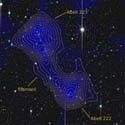Research News
-
Old Drug May Point to New Treatment for Diabetes, Obesity
Amlexanox, a drug that treats asthma and other conditions, also reverses obesity, diabetes, and fatty liver in mice, say researchers at U-M’s Life Sciences Institute.
-
Eat Less or Move More?
Whether one believes obesity is caused by overeating or a lack of exercise can determine whether he or she will gain or lose weight, according to new research to be published in the journal Psychological Science.
Related: Sugar-Loving Baby Boomers Face Risk of Osteoporosis
-
Capturing Circulating Cancer Cells
Engineering and medical researchers at U-M have devised a system they hope will trap circulating tumor cells, the ones they believe contribute to the process of cancer spreading from its original site to distant tissues. It’s a feat no research team has yet accomplished.
-
Overeating linked to newly discovered brain mechanism
A part of the brain usually thought to control movement also may cause people to overeat, say U-M researchers.
-
Look who's talking now: Smart cars
Ann Arbor is home to a first-of-its-kind test of “smart” technology that allows vehicles and highway infrastructure to communicate with each other. The goal is to help reduce crashes and improve traffic congestion.
-
Scientists Detect Dark Matter Scaffolding of the Universe
University of Michigan physics researcher Jörg Dietrich and a team of scientists are the first to detect part of the invisible dark matter skeleton of the universe, where more than half of all matter is believed to reside. The discovery confirms a key prediction in the prevailing theory of how the universe’s current web-like structure evolved.
Related: As predicted, U-M researchers help find Higgs-like particle.
-
Screening for Melanoma? There's an App for That
More than two million Americans are diagnosed with skin cancer each year, and some 50,000 will be diagnosed with melanoma, the most serious kind. Regular skin checks can help people discover melanoma in its earliest stages. That’s easier than ever now, thanks to a free app developed at the University of Michigan Health System.
-
Not just monkey business: cooperation vs. competition
Leaders take note: A new study of gelada monkeys indicates that being the top dog—or in this case, top monkey—is even better if the alpha male occasionally concedes to subordinates.
-
Homing In On Higgs Boson
Video: Michigan scientists involved in experiments at CERN’s Large Hadron Collider in Switzerland predict they’ll prove the existence of the Higgs boson by the end of summer. The Higgs is a linchpin in the overarching physics theory that describes the laws of nature and the nature of matter.









